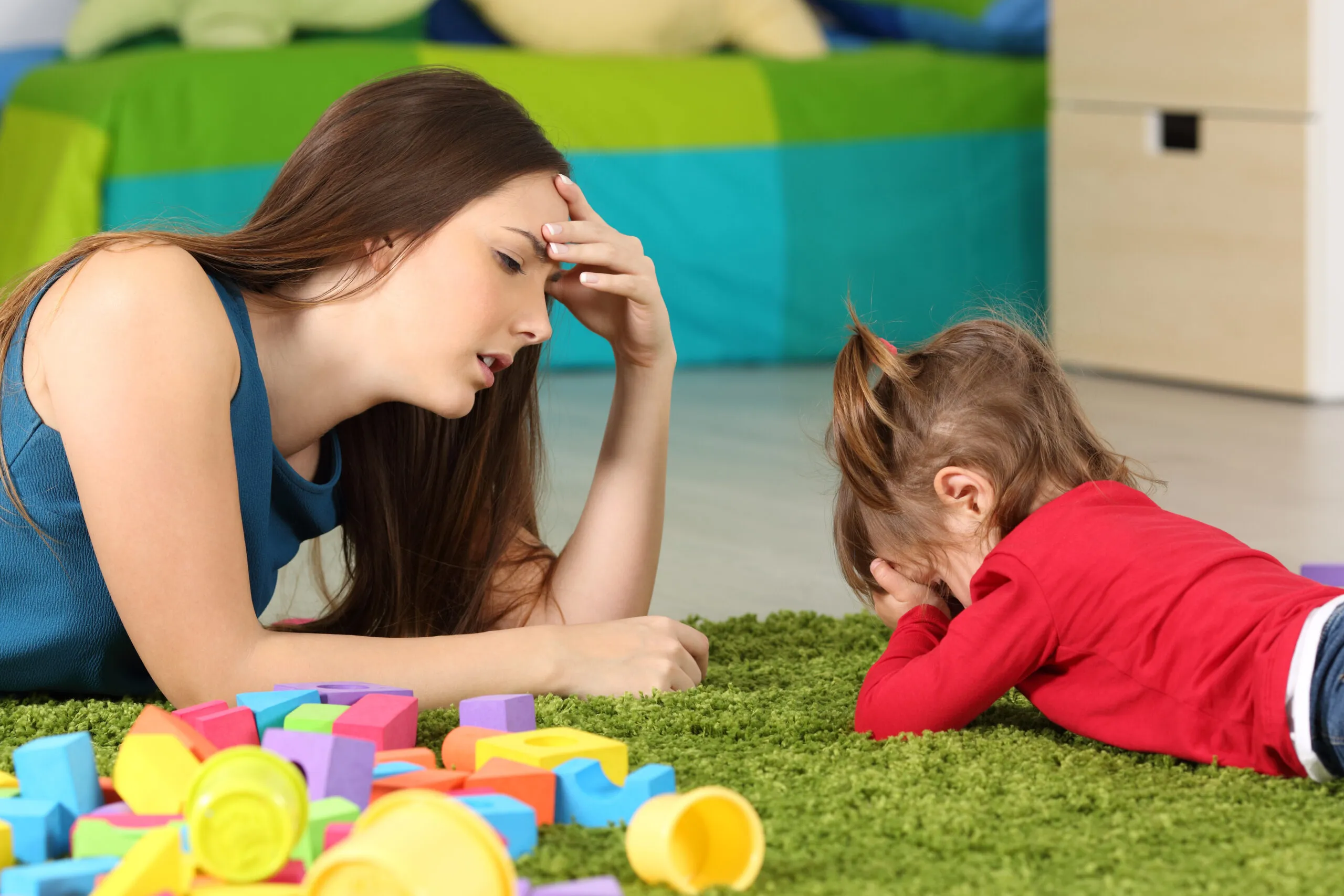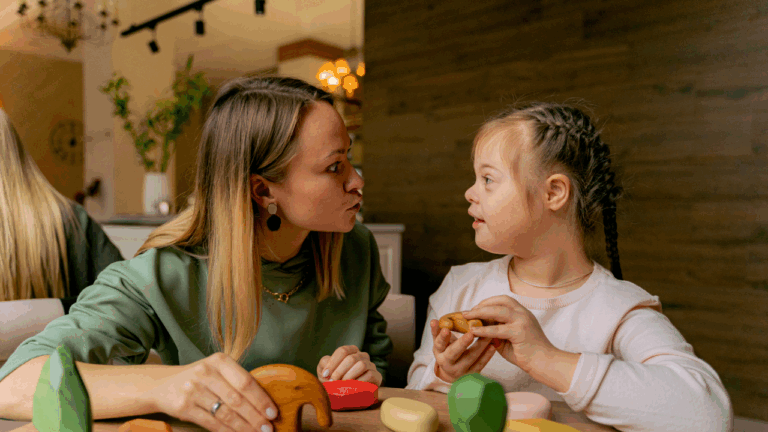
The good news is that you can take steps to support your child while maintaining balance in your work and personal life.
Children’s anxiety is increasingly recognised, impacting not only young ones but also parents’ mental health, family dynamics, and professional lives. A study conducted by Beyond Blue found that approximately 14% of Australian children and adolescents suffer from anxiety disorders, with symptoms often surfacing as early as age 6. Similarly, the American Academy of Child and Adolescent Psychiatry reports that anxiety disorders are among the most common mental health issues affecting children in the U.S., with an estimated 31.9% of adolescents experiencing some form of anxiety by the age of 18.
With the rise in anxiety among children and its increasing impact on families, it’s more important than ever to address this issue directly. This guide will help you understand your child’s anxiety, recognise its effects on your family, and provide actionable steps to support your child while also finding relief for yourself.
What is Childhood Anxiety, and Why Does It Matter?
Anxiety in children goes beyond occasional nervousness; it includes ongoing worry, emotional distress, and behaviours like school avoidance or excessive clinginess. Studies show that anxiety is often passed down through families, with both genetic and environmental factors at play. Parents with a history of anxiety may see similar behaviours in their children, and this family cycle of worry can make it challenging to establish a calm home environment.
For working parents, understanding this background is essential. Knowing what anxiety looks like in children and how it can affect the family unit empowers you to take steps that reduce its impact on your day-to-day life.

How Anxiety Can Affect Your Family Dynamics
When your child feels anxious, their distress often permeates the family and creates strain in other areas:
- Mood Sensitivity and Tension: Anxious children may have mood swings, withdrawal, or frequent outbursts, leading to increased stress at home and affecting family communication.
- Routine Disruptions: Anxiety-driven behaviours, like sleep issues and school avoidance, often disrupt daily routines. These disruptions affect parents’ schedules for work and home and add stress to family mornings, especially when balancing work and childcare responsibilities.
- School Performance and Social Challenges: Anxiety can lead to difficulties in concentrating, completing assignments, or participating in class, which can negatively affect a child’s academic performance. Socially, anxious children may struggle to make friends or avoid group activities, which can lead to feelings of isolation and impact their overall school experience.
- Sibling Relationships: When one child requires significant emotional support, siblings may feel overlooked, creating potential resentment or distance in sibling relationships.
- Financial and Emotional Toll on Parents: Studies show that parents of anxious children report higher rates of fatigue, depression, and health issues, as well as challenges in personal relationships and social activities. Anxiety-related needs, from therapy sessions to school meetings, can place unexpected demands on time and finances.
For parents juggling responsibilities (e.g., careers, household duties), the strain of managing a child’s anxiety can be even more significant.
From unexpected school pickups to navigating doctors’ appointments, balancing responsibilities like work, home, and family becomes an uphill struggle. Parents often say they are ‘failing’ at work, home, or both, as competing demands increase stress and erode confidence.
Anxiety in children affects fathers and mothers alike, and productivity at work and in other areas often suffers. Parents distracted by worry or forced to take unscheduled leave can experience career setbacks or frustration in managing work-life responsibilities.
However, you can address these challenges and create a more balanced environment with supportive tools and intentional strategies.
Practical Solutions to Support Your Child
Fortunately, there are effective ways to support your child’s well-being while reducing family stress:
1. Set Consistent Routines
Children with anxiety often feel more secure when they know what to expect. Establish predictable routines around bedtimes, meals, and morning activities to create stability, which reduces their need to worry about “what comes next.”
2. Encourage Open Communication
It is essential to create a safe space for your child to express their worries without fear of judgment. Acknowledge and validate their feelings with simple statements like, “I understand that you’re feeling nervous, and that’s okay.” This validation encourages them to open up, making it easier to address specific fears together.
3. Teach Calm Techniques
Guide your child through age-appropriate relaxation techniques like deep breathing, muscle relaxation, or visualisation exercises. Creating a “coping toolbox” filled with calming items like sensory toys or colouring books can give them something to turn to during anxious moments.
4. Model Calmness
Children absorb their parents’ emotions. Try modelling calm responses to stressful situations, showing your child how to manage frustration or worry healthily. Taking a few deep breaths or talking through your process out loud can set an example of handling stress.
5. Practice Gradual Exposure
Help your child face anxiety-provoking situations one small step at a time. For example, if social situations cause stress, start with small interactions and gradually build up. Praise their efforts, focusing on growth rather than specific outcomes.

Supporting Yourself as a Parent
To provide stability for your child, you must take care of yourself. Here are ways to reclaim energy and find balance:
- Set Clear Boundaries Between Work and Family: Limit the overlap between work and family time to avoid burnout. You may need to schedule specific “work hours” or set rules for spending time with your family to fully recharge.
- Find a Support Network: Connect with other parents going through similar experiences, seek out support groups, or consult a mental health professional to gain perspective and reduce feelings of isolation.
- Prioritise Your Well-Being: Practising self-care isn’t just a trendy phrase; it’s a vital step for parents managing high-stress environments. A regular sleep routine, exercise, or a simple weekly activity for yourself can be valuable outlets.
Moving Forward: Building a Calmer, Happier Home
Creating a supportive environment for an anxious child while maintaining work-life harmony is challenging but achievable. By implementing the strategies above, you can take decisive steps towards balancing family and career while fostering emotional stability for your anxious child. Remember, change takes time, and progress isn’t always linear. Be patient and consistent, and reach out for support when needed.
ProActive Psychology offers treatment for children and their parents through programs like our Star-4Kids program. With small changes and professional support, you can cultivate a more peaceful home and a thriving family environment that benefits everyone.
References
- Australian Institute of Health and Welfare (AIHW) 2023, Mental health services in Australia: Mental health of children and adolescents, AIHW, viewed 25 October 2024, https://www.aihw.gov.au/reports/mental-health-services/mental-health-services-in-australia.
- Beyond Blue n.d., Anxiety in children, Beyond Blue, viewed 25 October 2024, https://www.beyondblue.org.au/who-does-it-affect/children.
- Centers for Disease Control and Prevention (CDC) 2022, Data and Statistics on Children’s Mental Health, CDC, viewed 25 October 2024, https://www.cdc.gov/childrensmentalhealth/data.html.
- American Academy of Child and Adolescent Psychiatry (AACAP) n.d., Anxiety Disorders in Children, AACAP, viewed 25 October 2024, https://www.aacap.org/aacap/families_and_youth/resource_centers/anxiety_disorder_resource_center/faq.aspx.


